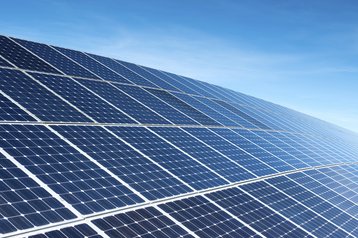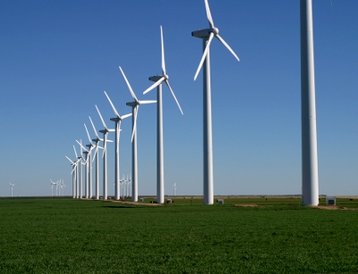Any data center operator with a public profile now claims that it runs, or plans to run its data centers on 100 percent renewable energy. The reality is that apart from those facilities with easy access to hydroelectric sources, data centers are rarely powered directly by renewable energy. Instead they are able to claim to use renewable power, through the use of renewable energy certificates and power purchase agreements.
Imperius RECs
Renewable energy certificates (RECs), also known as Tradeable Renewable Certificates, are a is a commodity item in the US. Each REC equates to the generation of 1 MWh of power from a qualified renewable resource, usually wind or solar power generation facilities. Not every state offers RECs but those that do make use of a certifying agency that gives each REC a unique identifier. This is to assure that each REC can only be used once. The REC is issued to the supplier and the energy the REC represents is fed into the general power grid, which then makes the REC available for use. Only a select few types of power generation qualify for the creation of RECs. At the moment these are limited to:
- Hydrogen gas powered fuel cells
- Biomass (including biofuels and landfill to gas production)
- Solar
- Wind
- Geothermal
- Low-impact hydro (not major dams that have an adverse impact on river flow)
Ownership of the REC conveys the right to claim to have made use of renewable energy, without directly creating or consuming it. In fact, there is no requirement for the owner of the REC to be connected in any way to the power generation or the grid to which the power is delivered. It is used completely as an offset for non-renewable power bought from whichever actual grid supplies the REC purchaser. Once an owner of a REC uses the certificate, ether to meet a regulatory requirement, or simply to make the claim that it is using renewable energy as a power source, the REC is retired and has no further use other than being claimed by the owner of the REC as evidence of support for renewable power generation, at the time it was retired.
Without RECs data centers connected to grids that do not provide 100 percent renewable energy sources would be limited to renewable energy claims that match the percentage of renewable power in the grid to which they are attached. For example, Duke Energy, the largest electric power holding company in the US, generates less than 20 percent of its power from renewable sources, but it serves a number of major data centers that claim to be 100 percent renewable energy powered. These customers use RECs as a means to be as green as possible by offsetting the non-renewable resources that provide the bulk of their actual power.
PPA contracts
Power purchase agreements (PPA) are the type of contracts that are usually used by utility companies to ensure long term power delivery and to provide funding for the construction of new renewable generating plants. Their use by data center operators is relatively recent as utility level power purchases were not generally executed by retail customers. Not all states allow the execution of PPAs with non-utility purchasers and in most cases such agreements fall under the auspices of the Federal Energy Regulatory Commission which is tasked with determining meet the regulatory requirements of the Energy Policy Act of 2015 for inclusion in a PPA.
In terms of renewable energy production, the data center operator who purchases a PPA from a qualified renewable resource is, once again, not required to run data centers directly from that power in order to claim to be operating on renewable energy. It is becoming more common, however, for data center PPA users to have data centers operating on the same grid to which the contracted facility is delivering power, so that their claims of running their data center on 100 percent renewable energy strike closer to the truth, even if 100 percent of the power available from the grid to which the data center is serviced is not renewably sourced.
One version of the PPA that is coming into more common use is the virtual power purchase agreement (VPPA). In this situation the customer who has signed the PPA is obligated to pay for the contracted power at a fixed price. The power plant sells the power into the local market, which is unlikely to be the same market as the data center contracting for the power. If the price is below that guaranteed by the virtual PPA, the data center operator pays the difference between that sale price and the contract price. Should the energy sell for more than the contract price, the data center operator would make a profit from the VPPA contract. Virtual PPAs can be used in locations that do not allow traditional PPA agreements, either due to the lack of deregulation or legality.
Which is right for you?
Large data centers that are run by companies the size of Google, Microsoft, Amazon, Facebook, or Yahoo, can afford the commitment that a PPA requires. Smaller data centers who wish to advertise a 100 percent renewable energy claim and who are not directly serviced by power providers who offer that as an option would need to purchase RECs to meet that goal.
While there is no “typical” PPA agreement, some major data center operators signed huge PPA commitments in 2015. In Texas, HP signed a 12 year PPA with SunEdison for 112MW of power to run five Texas data centers. While this covers 100 percent of HP’s current need for those data centers it is only a third of the output from the 300MW South Plains II Wind Farm whose basic funding is guaranteed by that PPA.
In keeping with the theme of purchasing power locally, Facebook made a PPA commitment for its Iowa data center for 138MW, enough energy to completely power the facility in Altoona, IA, from the wind farm in Wellsberg, IA. And Microsoft signed a 20 year PPA with the 110MW Keechi Wind Project in Texas to power their San Antonio Texas data center. Amazon has signed similar agreements, for example an 80MW PPA for solar power in Accomack, VA and 150 MW for wind in Indiana.
Apple is somewhat close mouthed about how it plans to achieve its promise of 100 percent renewable energy, but has actially built solar and fuel cell power plants adjacent to some of its data center facilities. However, given the intermittent nature of renewable production, Apple is most likely using RECs to achieve the 100 percent number.
Google, meanwhile, has also committed to reaching a 100 percent renewable goal, adding 842 MW of renewable power from wind farms worldwide towards the end of 2015.
If you would like to learn more about solar power register now for our “Powering Big Data with Big Solar” webinar.


